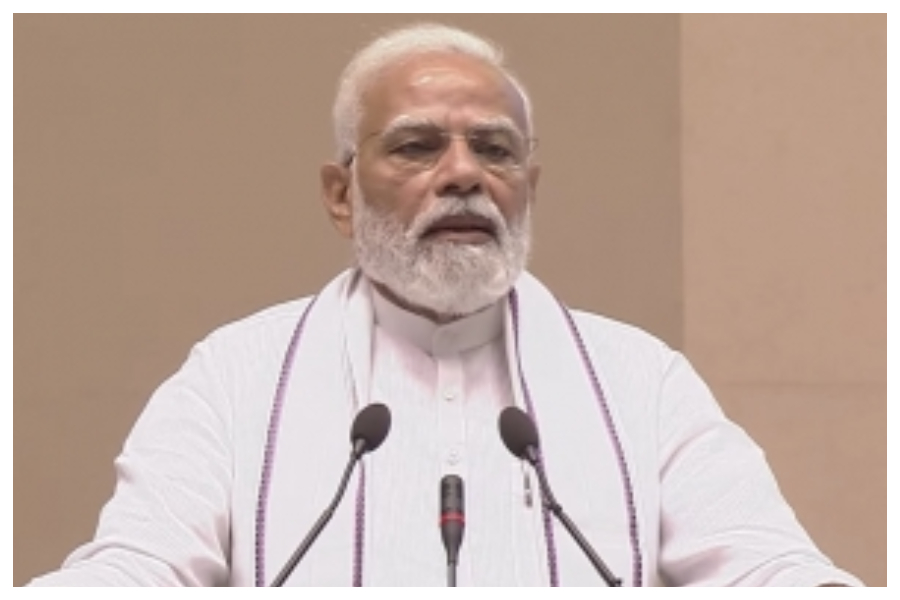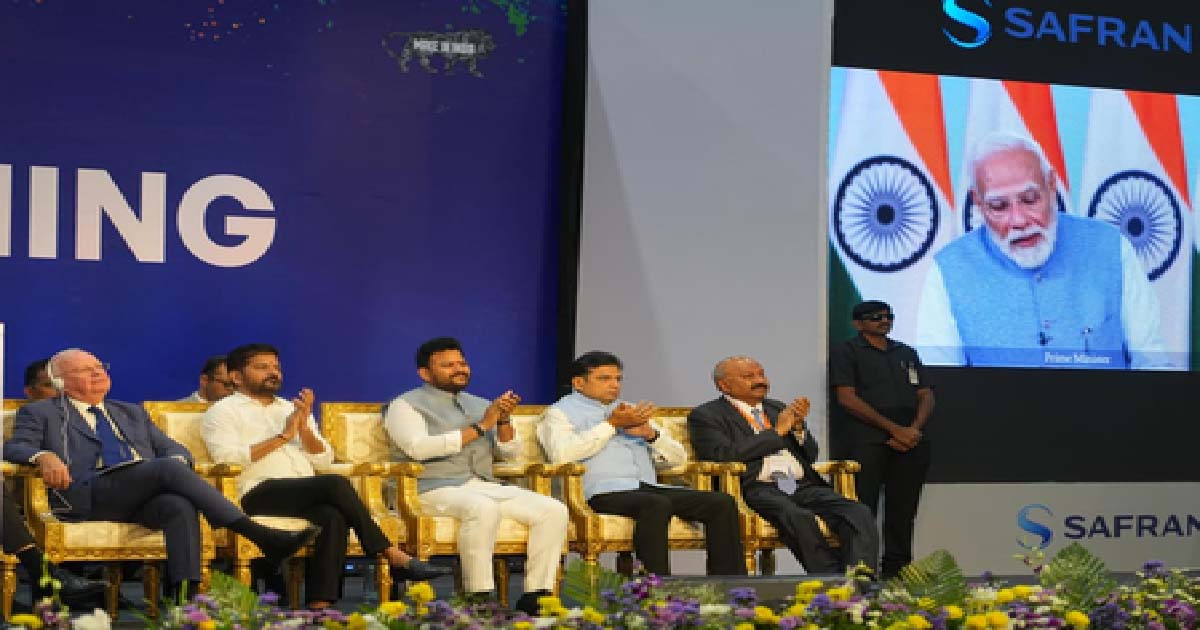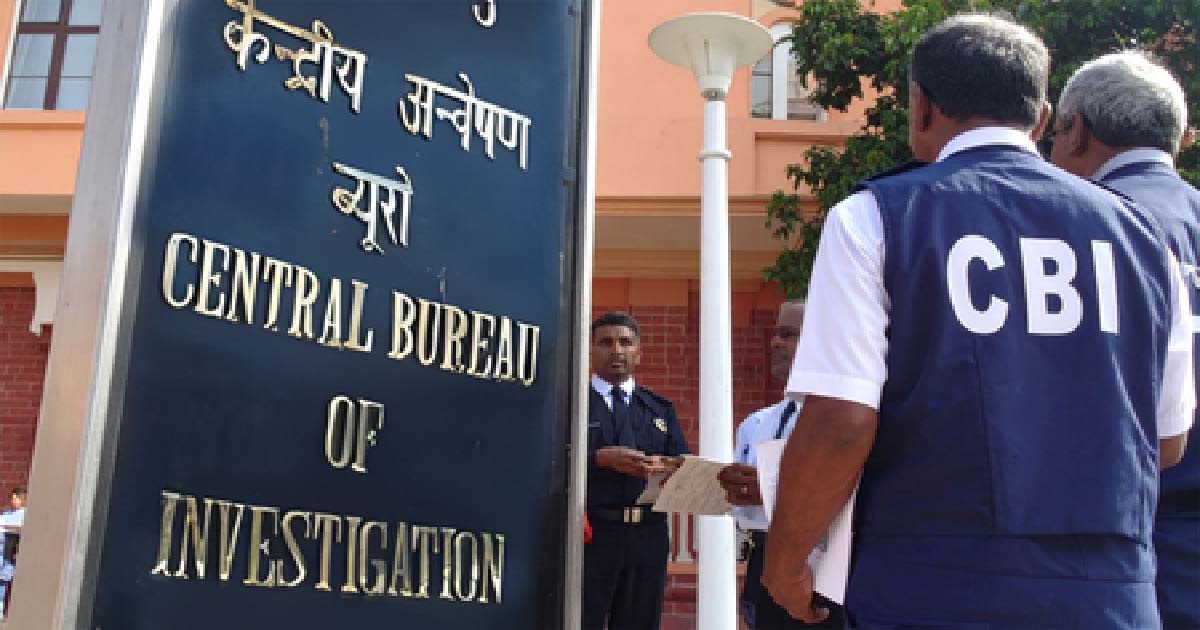National News
PM to chair ‘First National Conference of Chief Secretaries’ in Dharamshala on June 16-17

Prime Minister Narendra Modi will chair the ‘first national conference of chief secretaries’ in Dharamshala on June 16 and 17.
The conference will be held at HPCA stadium in Dharamshala and will be a significant step towards further strengthening the partnership between the Centre and the state governments.
Slated to be held from June 15 to 17, the event have more than 200 people representing the Centre, all states/UTs and domain experts.
In a statement, the Prime Minister’s Office (PMO) said that spread over three days, it will focus on the rapid and sustained economic growth in partnership with the States. “Working as Team India, the conference will lay the ground for collaborative action for higher growth with sustainability, creation of jobs, education, ease of living and aatmanirbharta in agriculture. The Conference will emphasise on evolution and implementation of a common development agenda and blueprint for cohesive action to achieve the aspirations of the people,” it said.
The concept and agenda for this conference has been curated after more than 100 rounds of deliberations spread over six months. Three themes have been identified for detailed deliberations in the conference — Implementation of the National Education Policy; Urban governance; and Crop diversification and achieving self-sufficiency in oilseeds, pulses and other agri-commodities. Under National Education Policy, both school and higher education shall be deliberated upon. Best practices from states/ UTs under each of the themes shall be presented at the conference for mutual learning.
There would be a session on Aspirational Districts Programme which would deliberate upon the achievements made so far, with successful case studies including on data based governance, presented by the young Collectors in specific districts.
Also, a special session on ‘Azadi ka Amrit Mahotsav: Roadmap to 2047’ and four additional thematic sessions on ‘Reducing Compliance Burden and Decriminalization of Minor Offences for Ease of Doing Business’; Centre – State Coordination for achieving Asaturation coverage of schemes and ensuring last mile delivery; Transforming India’s infrastructure through PM Gati Shakti; and Capacity building: Implementation of iGOT – Mission Karmayogi have been planned.
The outcomes of the conference will be subsequently deliberated in the Governing Council Meeting of NITI Aayog, where chief ministers and administrators of all states and union territories will be present, so that an action plan can be finalised with the broad consensus at the highest levels.
Business
Revanth Reddy urges PM Modi to declare Bengaluru-Hyderabad as defence & aerospace corridor

Hyderabad, Nov 26: Telangana Chief Minister A. Revanth Reddy, on Wednesday, appealed to Prime Minister Narendra Modi to declare Bengaluru-Hyderabad as a defence and aerospace corridor.
The Chief Minister said this during the inauguration of the French aerospace major Safran’s largest MRO centre for the CFM International LEAP engines in Hyderabad.
The Chief Minister stated that declaring Bengaluru-Hyderabad as a defence and aerospace corridor will contribute to Viksit Bharat.
The Safran Aircraft Engine Services India (SAESI) facility at the GMR AeroPark (SEZ) near Shamshabad will be operational in 2026.
The Chief Minister congratulated Safran for choosing Hyderabad for a big investment and thanked it for its trust and continued partnership with Telangana.
He stated that this new facility marks an important milestone for Telangana’s growth in the aerospace and defence sector.
Revanth Reddy noted that this is the first-ever Maintenance, Repair and Overhaul (MRO) centre for LEAP engines in India. Set up with an investment of ₹1,300 crore, the centre will employ over 1,000 skilled technicians and engineers, while also generating new business opportunities for local MSMEs and precision engineering firms, he said.
He said that the foundation stone was also laid today for Safran’s M88 Military Engine MRO, which will support both the Indian Air Force and the Indian Navy.
The Chief Minister emphasised that Hyderabad has emerged as a major aerospace and defence hub, home to more than 25 major global companies and over 1,500 MSMEs. He added that Telangana’s progressive industrial and MSME policies are ranked among the best in India.
He said that Hyderabad’s world-class infrastructure, aerospace parks and SEZs continue to attract mega investments from leading global companies, making the city a top choice for highly complex precision engineering projects.
He noted that Hyderabad is already a preferred destination for companies such as Safran, Boeing, Airbus, Tata, and Bharat Forge for manufacturing and R&D activities, and has become one of India’s leading MRO and aero-engine hubs.
The Chief Minister highlighted that Telangana’s aerospace and defence exports doubled last year, reaching ₹30,742 crore in just nine months, surpassing the state’s pharma exports for the first time.
He also mentioned that Telangana has consistently won the Best State Award for Aerospace from the Ministry of Civil Aviation.
He underscored that skilling is a key factor in attracting aerospace investments. Telangana has upgraded 100 Industrial Training Institutes into Advanced Technology Centres in partnership with Tata Technologies, ensuring youth are job-ready for advanced manufacturing.
He added that the Young India Skills University is offering specialised training in aircraft maintenance and invited Safran to be a lead partner in aerospace and MRO skilling initiatives.
Reaffirming Telangana’s commitment to supporting partners like Safran with world-class infrastructure, the Chief Minister spoke about the upcoming Bharat Future City, being developed across 30,000 acres as a planned, fully green, net-zero global destination – India’s answer to New York, Tokyo, Dubai and Singapore.
He extended an invitation to the Prime Minister to attend the ‘Telangana Rising 2047 – Global Summit’ at Bharat Future City on December 8 and 9, where the state’s long-term vision will be unveiled. Telangana aims to become a $1 trillion economy by 2035 and a $3 trillion economy by 2047.
Crime
Attack on ED team in Sandeshkhali: Nearly after 2 years, CBI arrests another key accused

Kolkata, Nov 26: The sleuths of the Central Bureau of Investigation (CBI) on Wednesday finally arrested another key accused in the assault on the Enforcement Directorate (ED) officials at Sandeshkhali in North 24 Parganas district of West Bengal, nearly two years after the incident.
The person arrested in this connection has been identified as Durant Molla, a close associate of the now-suspended Trinamool Congress leader Shaikh Shahjahan, once deemed as the uncrowned king of Sandeshkhali.
The main charge against Molla is that he was the one who led the team of Shahjahan’s associates who attacked the ED officials, in which three of the investigating officers were severely injured.
Even the Central Armed Police Forces (CAPF) personnel accompanying the ED official also faced the wrath of the mob, who also vandalised several vehicles of the investigating team.
Initially, West Bengal Police investigated the matter. Later, as the CBI took over the investigation, Molla was identified as the one leading the team of attackers.
Although Shahjahan was arrested by the cops of West Bengal Police almost a month after the attack took place on the ED officials, Molla went into hiding and remained untraceable for nearly two years
Finally, on early Wednesday, he was arrested by the CBI sleuths from a hideout in the North 24 Parganas district.
However, the CBI officials were yet to disclose the exact location from where he was nabbed.
Molla will be presented at the court later in the day, and CBI counsel will seek his custody.
Shahjahan, a key accused in the multi-crore ration distribution case in West Bengal, has various other charges against him, including forceful land grabbing at Sandeshkhali, illegal conversion of farmland into pisciculture farms by forcefully flowing in saline water in that land, and sexual exploitation of the local women at Sandeshkhali.
National News
PM Modi calls for duty-driven vision of Viksit Bharat in heartfelt letter to citizens on Constitution Day

New Delhi, Nov 26: Prime Minister Narendra Modi on Wednesday wrote a reflective letter to the citizens of India on the occasion of Constitution Day, invoking memories of the historic adoption of the Indian Constitution in 1949 while charting a forward-looking vision of a ‘Viksit Bharat (Developed India)’. He urged every Indian to place duties at the forefront as the nation moves confidently towards its centenary of Independence.
The Prime Minister recalled that in 2015, the Government of India officially declared November 26 as Constitution Day, a tribute not only to the founding document of the nation but also to the democracy it continues to strengthen.
In his letter, PM Modi emphasised how the Constitution has played a pivotal role in enabling common citizens to rise to positions of immense responsibility. He shared emotional memories of moments that shaped his reverence for democratic institutions.
“26th November is a day of immense pride for every Indian. It was on this very day in 1949 that the Constituent Assembly adopted the Constitution of India, a sacred document that has continued to guide the nation’s progress with clarity and conviction,” his letter reads.
“It is the power of our Constitution that enabled a person like me, coming from a humble and economically disadvantaged family, to serve as the Head of Government continuously for over 24 years. I still remember the moment in 2014, when I came to Parliament for the first time and bowed, touching the steps of the greatest temple of democracy. Again, in 2019, after the election results, when I entered the Central Hall of Samvidhan Sadan, I bowed and placed the Constitution on my forehead as a mark of reverence. This Constitution has given countless others, like me, the power to dream and the strength to work towards realising those dreams.”
The letter also paid rich tributes to the architects of the Indian Constitution, including Rajendra Prasad, B.R. Ambedkar and numerous distinguished women members of the Constituent Assembly who shaped its ideals. PM Modi recalled landmark events such as the Samvidhan Gaurav Yatra in Gujarat during the 60th anniversary of the Constitution, and the special Parliament session held recently during the 75th anniversary year — events that witnessed unprecedented public enthusiasm and participation.
Calling this year’s Constitution Day especially meaningful, he noted that it aligns with historic milestones: The 150th birth anniversaries of Sardar Vallabhbhai Patel and Bhagwan Birsa Munda, the 150th anniversary of Vande Mataram, and the 350th martyrdom anniversary of Guru Tegh Bahadur Ji. These moments, he said, remind citizens of the fundamental place of duties in national life — a principle enshrined in Article 51A of the Constitution.
Quoting Mahatma Gandhi, PM Modi reiterated that rights are born from duties, asserting that the fulfilment of duties is the path towards social harmony, economic growth and national unity.
Looking ahead, the Prime Minister reflected on the transformative journey India stands poised to undertake. He noted that 25 years of the 21st century have already passed, and in just a little over two decades, India will complete 100 years of Independence. The year 2049 will also mark a century since the adoption of the Constitution — a moment, he said, that demands preparation beginning today.
He urged citizens to internalise duty as a guiding value in both personal and national development, adding that the policies and decisions made now will shape generations yet unborn.
The Prime Minister also underscored the responsibility of strengthening democracy by voting. He suggested that educational institutions celebrate Constitution Day by recognising first-time voters turning 18, instilling a sense of pride and accountability among the nation’s youth.
As he concluded the letter, PM Modi called upon all Indians to renew their pledge to build a nation rooted in constitutional ideals and driven by collective duty.
“Let us, on this Constitution Day, reaffirm our pledge to fulfil our duties as citizens of this great nation. In doing so, we can all contribute meaningfully to the building of a Viksit Bharat that is developed and empowered,” PM Modi said.
-

 Crime3 years ago
Crime3 years agoClass 10 student jumps to death in Jaipur
-

 Maharashtra1 year ago
Maharashtra1 year agoMumbai Local Train Update: Central Railway’s New Timetable Comes Into Effect; Check Full List Of Revised Timings & Stations
-

 Maharashtra1 year ago
Maharashtra1 year agoMumbai To Go Toll-Free Tonight! Maharashtra Govt Announces Complete Toll Waiver For Light Motor Vehicles At All 5 Entry Points Of City
-

 Maharashtra1 year ago
Maharashtra1 year agoFalse photo of Imtiaz Jaleel’s rally, exposing the fooling conspiracy
-

 National News1 year ago
National News1 year agoMinistry of Railways rolls out Special Drive 4.0 with focus on digitisation, cleanliness, inclusiveness and grievance redressal
-

 Maharashtra1 year ago
Maharashtra1 year agoMaharashtra Elections 2024: Mumbai Metro & BEST Services Extended Till Midnight On Voting Day
-

 National News1 year ago
National News1 year agoJ&K: 4 Jawans Killed, 28 Injured After Bus Carrying BSF Personnel For Poll Duty Falls Into Gorge In Budgam; Terrifying Visuals Surface
-

 Crime1 year ago
Crime1 year agoBaba Siddique Murder: Mumbai Police Unable To Get Lawrence Bishnoi Custody Due To Home Ministry Order, Says Report












